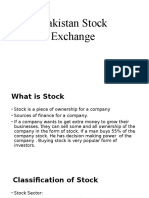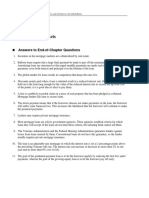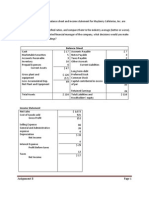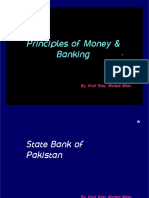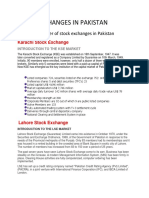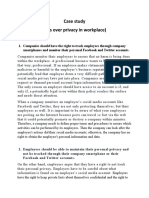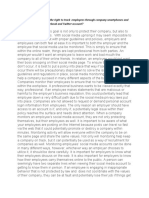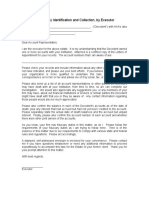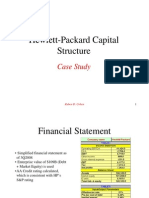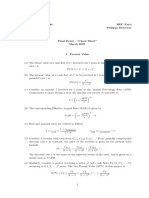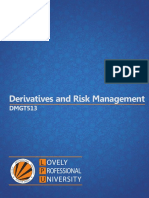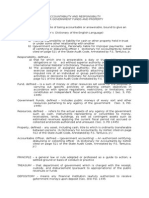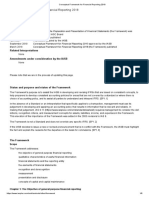PAKISTAN STOCK EXCHANGE
Outline
History
No of Listed Companies
Index
Listing Requirements and De-listing
Brief History
Pakistan Stock Exchange Limited (PSX) (formerly: Karachi Stock Exchange (Guarantee) Limited
(KSE) was established on September 18, 1947. It was incorporated on March 10, 1949. Only five
companies were initially listed with a total paid-up capital of 37 million rupees. The first index
introduced in KSE was based on fifty companies and was called KSE 50 index. Trading used to be
carried out on open out-cry system. Computerized trading system called Karachi Automated
Trading System (KATS) was introduced in 2002 with a capacity of 1.0 million trades per day and
the ability to provide connectivity to an unlimited number of users.
In October 1970, under the Securities and Exchange Ordinance of 1969 by the Government of
Pakistan, a second stock exchange was established in Lahore in response to the needs of the
provincial metropolis of the province of Punjab. It initially had 83 members and was housed in a
rented building in the crowded Bank Square area of Lahore. The LSE was the first stock
exchange in Pakistan to use the internet.
Yet another stock exchange known as Islamabad Stock Exchange was established in Islamabad,
the capital city of Pakistan on October 25, 1989 with the main object of setting up of a trading
and settlement infrastructure, information system, skilled resources, accessibility and a fair and
orderly market place that ranks with the best in the world and to cater to the needs of less
developed areas of the northern part of Pakistan. It was licensed as a stock exchange on
January 7, 1992.
�All these three exchanges had separate management, trading interfaces, indexes, listing criteria
etc and thus had no mutual links to each other. All three exchanges were previously operating
as a non-profit organizations with mutualized structure wherein their respective members had
trading as well as ownership rights. This structure inherently created conflict of interest and
perceived to jeopardize the investors' interest. Therefore, the Stock Exchanges
(Corporatization, Demutualization & Integration) Act, 2012 (known as "Demutualization Act")
was promulgated by the Government. As a result these three exchanges were merged together
to form a new combined exchange called Pakistan Stock Exchange Limited (PSX) which started
its operations on January 11, 2016 under this new title.
As provided under the aforesaid Demutualization Act, now Members have ceased to be
Members of PSX and they have been issued Trading Right Entitlement Certificates ("TRECs")
and PSX's ownership shares, thus separating trading rights from ownership rights. Whereas
TRECs represent trading rights, PSX shares represent ownership. Now, TREC holders need not
be a shareholder of PSX nor a PSX shareholder is required to be TREC holder of PSX.
As envisaged under the provisions of the Demutualization Act, regulatory functions have been
segregated from commercial functions of PSX, so that regulatory functions are not
compromised for achievement of commercial objective of generating revenue. Moreover,
under the provisions of the said Act, after demutualization, persons representing TREC holders
on the PSX Board shall not be in majority and the Act also envisages divestment of shares of
TREC holders held in their blocked accounts to strategic investors and general public/financial
institutions within a certain time limit.
Karachi branch of Pakistan Stock Exchange is located on Stock Exchange Road, in the heart of
business district of Karachi. The premises is known as Stock Exchange Building.
Listing in PSX
As on March 23rd, 2021 there are 549 companies listed in PSX and the total market
capitalization is Rs. 8,042.491 billions. The listing is done on the basis of strict rules and
regulations laid out by Securities Exchange Commission of Pakistan (SECP) & the management
�of Pakistan Stock Exchange Limited. All the listed companies are categorized in various main
business sectors. As on March 23rd, 2021 there are total 36 sectors listed on Pakistan Stock
Exchange which contribute towards the market capitalization and all the listed companies
(excluding their future contracts) are divided among these. Rest of the noncontributory sectors
are allocated for indexes, futures, bonds etc.
Market Indexes
KSE 100 Index:
The KSE-100 Index was introduced in November 1991 with base value of 1,000 points. The
Index comprises of 100 companies selected on the basis of sector representation and highest
free-float capitalization, which captures over 80% of the total free-float capitalization of the
companies listed on the Exchange. 36 companies are selected i.e. one company from each
sector on the basis of the largest free-float capitalization and the remaining 64 companies are
selected on the basis of largest free-float capitalization in descending order. This is a total
return index i.e. dividend, bonus and rights are adjusted. It is revised after every six months for
inclusion or exclusion of companies on the basis of above mentioned criteria.
During 2012, the governing board of directors of the Pakistan Stock Exchange (formally: Karachi
Stock Exchange) decided to implement the KSE-100 Index on the basis of free-float market
capitalization instead of total market capitalization. The Rules for composition and
recomposition of the Index based on free-float methodology have remained un-changed other
than selection of companies on the basis of free-float market capitalization as against total
market capitalization.
KSE ALL Index:
In 1995, the need was felt for an all-share index to reconfirm the KSE-100 and also to provide
the basis of index trading in future. By August 29, 1995 the KSE-All Share Index was constructed
�which became operative on September 18, 1995.
KSE-All Index is calculated using total market capitalization method.
KSE 30 Index:
In June 2005, another benchmark index named KSE-30 was introduced with a base value of
10,000 index points to provide investors with a sense of how large companies' scrips of the
Pakistan’s equity market are performing over a period of time. Thus, the KSE-30 Index is
designed in such a way that it becomes comparable over a period of time similar to other
indicators that track various sectors of country’s economic activity such as the gross national
product, consumer price index etc.
KSE-30 Index is calculated using the free-float capitalization methodology.
KMI 30 Index:
Introduced in September 2008, the objective of KSE-Meezan Index (KMI) is to serve as a gauge
for measuring the performance of Shariah compliant equity investments. Besides tracking
performance of Shariah compliant equities, its construction will increase investor trust and
enhance their participation.
KSE-Meezan Index is also calculated using the “Free-Float Capitalization”.
ALL SHARES ISLAMIC Index:
Introduced on November 18, 2015 as a joint effort by the management of Pakistan Stock
Exchange (PSX) and Meezan Islamic Bank Limited.
The principal objective of the All Shares Islamic Index is to gauge the performance of the
Shariah compliant segment of the equity market. Accordingly, it is important that all those
shares which meet the Shariah screening criteria should be included in the All Shares Islamic
Index in order to ensure completeness of the index and adherence to the core objective of the
proposed All Shares Islamic Index.
The companies included in this index are selected on the basis of a six factors selection criteria.
First criteria is that the core business of the company must be permissible in Islamic Shariah and
also on ethical grounds. Other five factors determine the financial compliance of the
�companies. After selection, these companies pass through another six stage filter to exclude
defaulter, non-operational companies along with all Mutual Fund companies.
Base value for this index has been set at 15,000 points. Review and Re-composition will be
carried out bi-annually.
Listing Requirements
For a company to trade its shares on a stock exchange, it must be able to meet that exchange's
listing requirements and pay both the exchange's entry and yearly listing fees.
Listing requirements vary by exchange and include minimum stockholder's equity, a minimum
share price, and a minimum number of shareholders.
What is the eligibility criteria?
1) Main Board
Minimum paid up capital of Rs. 200 million
2) SME Board
Minimum paid up capital of Rs. 25 million
Mandatory Requirements:
Financial statements
Must prepare periodic financial statements
Must audit statements by QCR rated chartered accountants
Must publish on the website
SME Websites
Must contain basic business information
Must contain prospectus
Must post annual, half-year quarterly accounts
Operational Requirements
Must be in business for at least three years
Must be profitable for at least two preceding years before getting listed
� De-listing
Exit strategy:
Voluntary De-listing
You can delist your company through buy-back of shares at a price approved by the Exchange
Involuntary De-listing
Your company can be removed from the listed companies list due to violation of PSX’s Listing of
Companies & Securities Regulations
-----------------------------------------------------------
